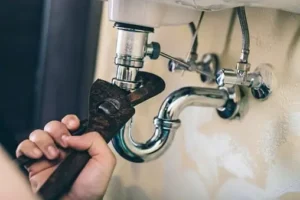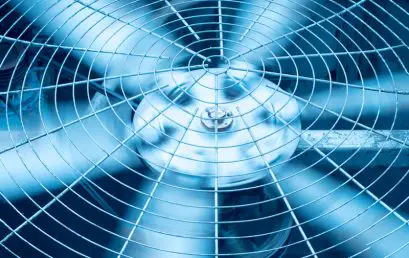 The outside unit, known as the condenser, typically contains a compressor, cooling fins and tubes and a fan. The fan sucks air through the fins, cooling a special coolant which the compressor then pumps into the home or office to the evaporator through a copper tube. Coolant chills the fins and tubes of the evaporator. Warmer air drawn from the building by the blower passes through the evaporator and is cooled before being blown through ducts to the rooms. The evaporator dehumidifies the air as it cools it, and the resulting condensation typically drains off to a floor drain through a tube. That’s the process in a nutshell. As you can see, the outside unit plays a critical role, and is left largely unprotected in the elements outdoors. Here are some easy steps you can take to improve the longevity and efficiency of your outside AC unit and your HVAC system as a whole through proper air conditioner maintenance.
The outside unit, known as the condenser, typically contains a compressor, cooling fins and tubes and a fan. The fan sucks air through the fins, cooling a special coolant which the compressor then pumps into the home or office to the evaporator through a copper tube. Coolant chills the fins and tubes of the evaporator. Warmer air drawn from the building by the blower passes through the evaporator and is cooled before being blown through ducts to the rooms. The evaporator dehumidifies the air as it cools it, and the resulting condensation typically drains off to a floor drain through a tube. That’s the process in a nutshell. As you can see, the outside unit plays a critical role, and is left largely unprotected in the elements outdoors. Here are some easy steps you can take to improve the longevity and efficiency of your outside AC unit and your HVAC system as a whole through proper air conditioner maintenance.
- Clear debris from the top of your outside unit, like leaves, pollen buildup, sticks, bugs, etc.
- Turn off the power and clean the condenser.
- Cover your outside AC unit with plywood for the winter – if you wrap it with plastic, it’ll rust.
- Replace indoor filters at least quarterly to maintain efficiency and prevent buildup.
- Contact an HVAC professional every 2-3 years to check electrical parts and the coolant level.


